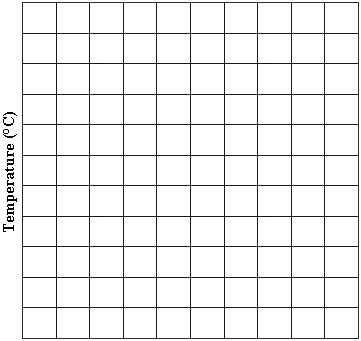Beneath the surface
This task is about using data to explore temperature in the interior of the Earth.
The table below gives the temperatures recorded at different depths (as a change from the surface temperature) in a section of the Earth's crust.
| Depth (km) | 0 | 1 | 2 | 3 | 4 | 5 | 6 | 7 | 8 |
| Temperature (°C) | 0 | 20 | 45 | 70 | 95 | 120 | ? | 170 | 195 |
| a) |
Plot this data as a line graph.
|
|
Temperature change with depth in the Earth's crust
 |
|
|
Depth (km)
|
|
| b) |
From the graph, what is the temperature at a depth of 6 km? _______ °C
|
| c) |
An underground coal mine is being developed in this area. If the miners could work in temperatures of 30°C or less, what is the maximum depth this coal mine could be?
__________ km
|
| d) |
Calculate the average temperature change for each kilometer change in depth. _______ °C
|
| e) |
Write a sentence explaining how the relationship between temperature and depth changes as the depth increases.
|


 .
.